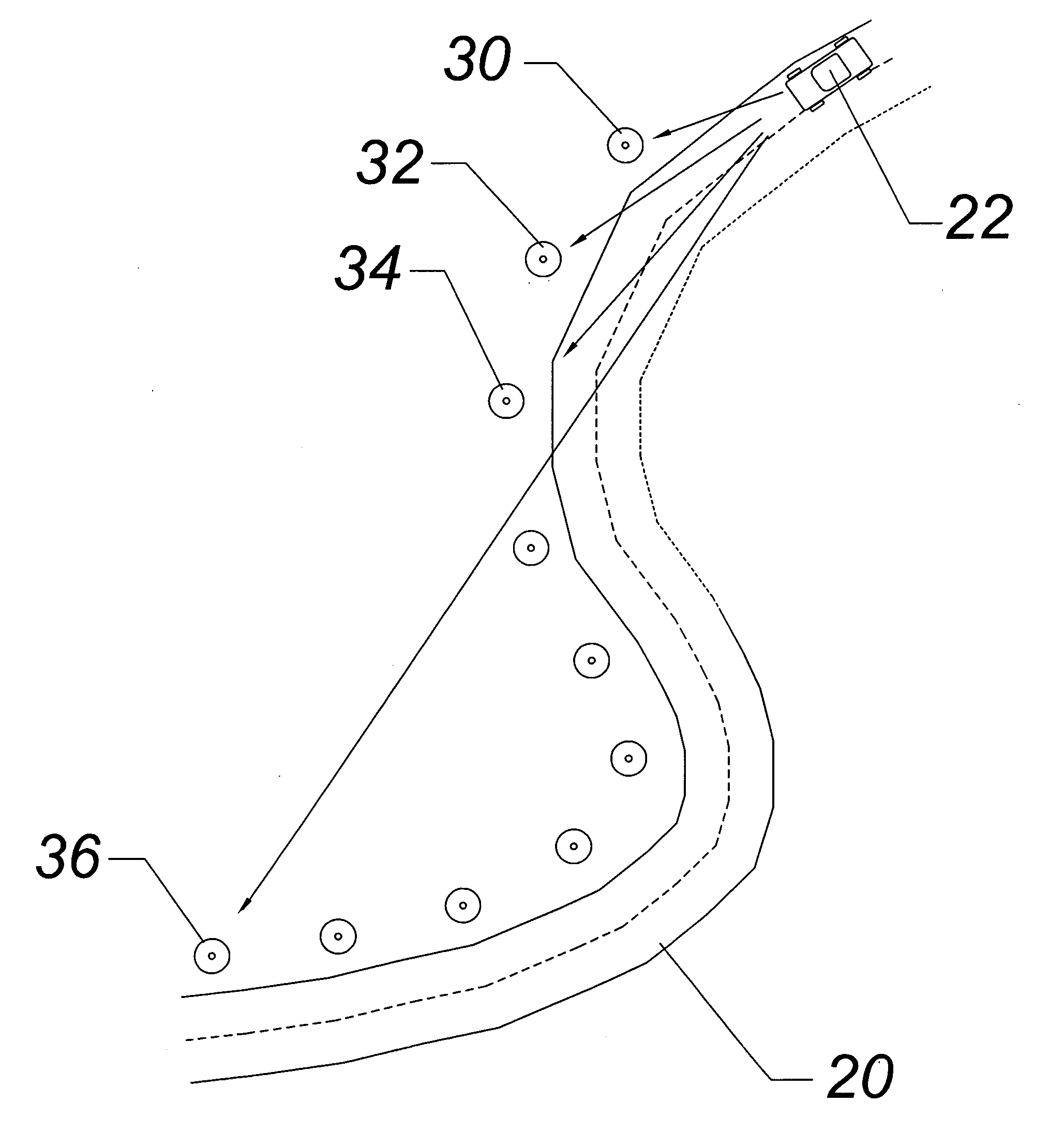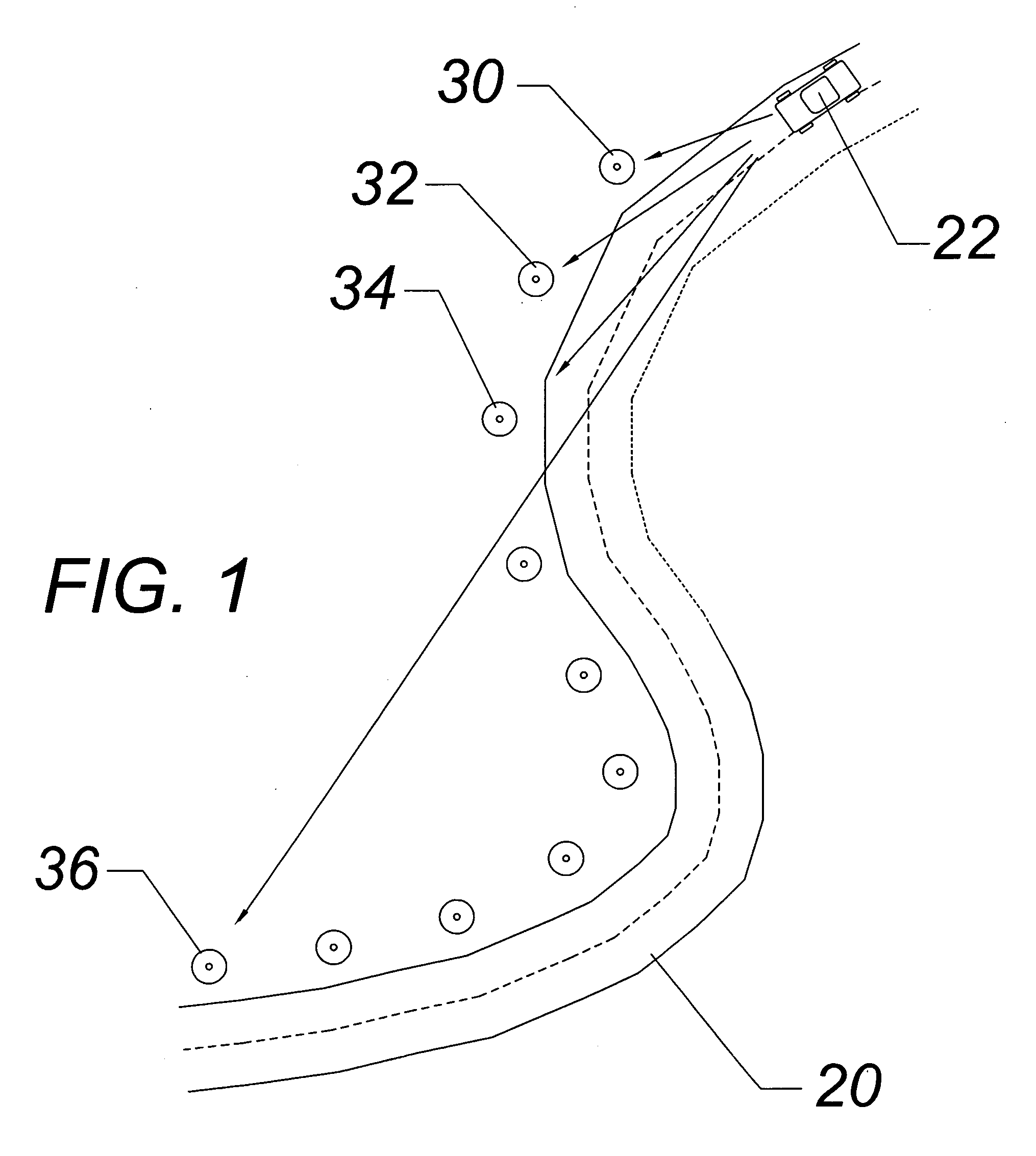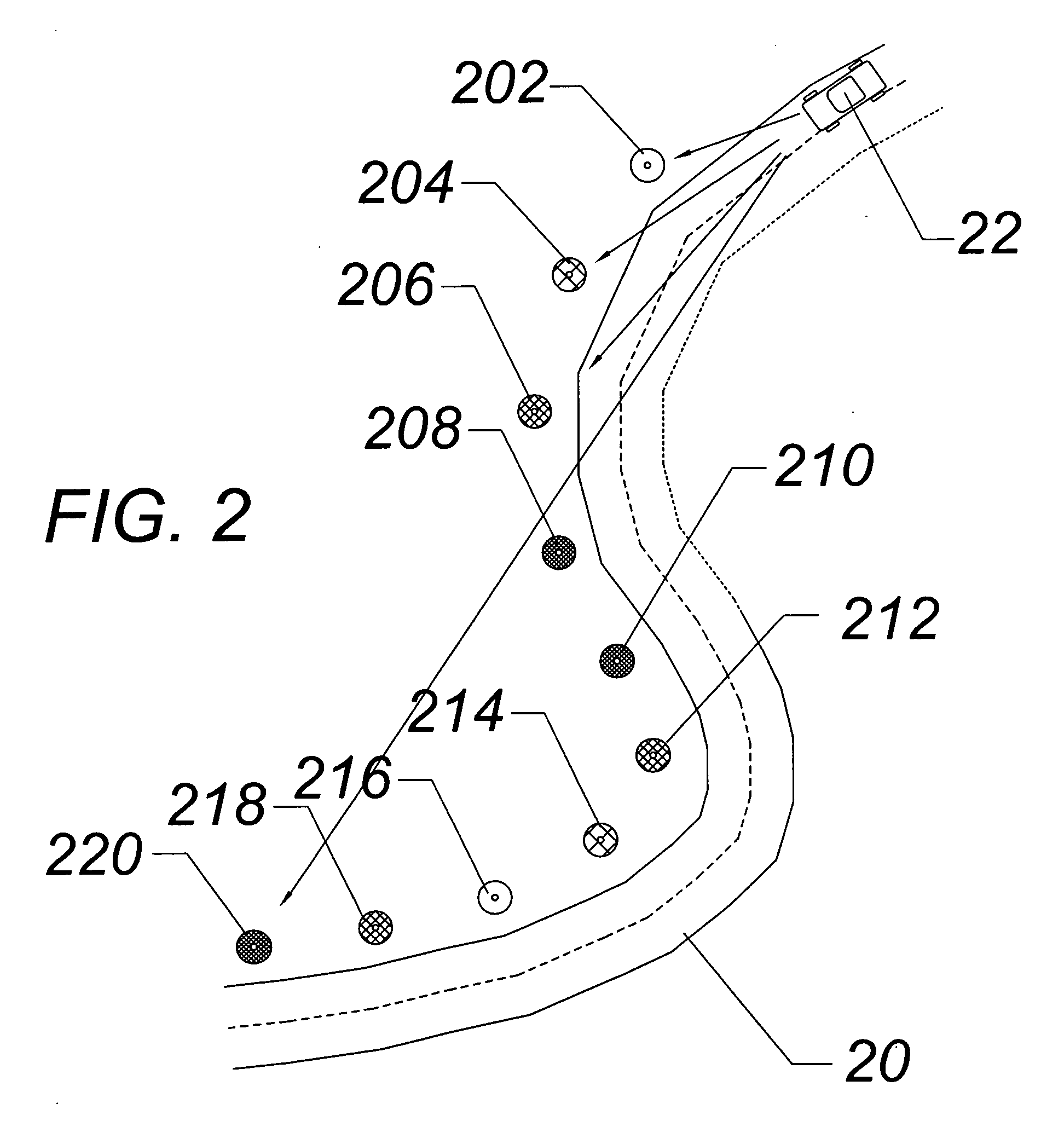Sequenced vehicular traffic guiding system
a vehicle traffic and guiding system technology, applied in the direction of landing aids, instruments, lighting support devices, etc., can solve the problems of confusion and disorientation, poor visibility, and more confusion
- Summary
- Abstract
- Description
- Claims
- Application Information
AI Technical Summary
Benefits of technology
Problems solved by technology
Method used
Image
Examples
Embodiment Construction
[0018]The invention may be embodied in other specific forms without departing from its spirit or essential characteristics. The described embodiments are to be considered in all respects only as illustrative and not restrictive. The scope of the invention is therefore indicated by the appended claims rather than the foregoing description. All changes that come within the meaning and range of equivalency of the claims are to be embraced within their scope. Throughout the detailed description and remainder of this document, the author uses the term “traffic” to refer to motor vehicular, nautical, pedestrian, or aircraft movement.
[0019]FIG. 1 illustrates a road 20 with a vehicle 22 driving along the road 20 into a turn. A plurality of flashing markers, including markers 30, 32, 34, and 36, are distributed along side the road 20. These markers 30, 32, 34, 36 can be passive with no illumination or signaling, or they can flash in unsynchronized patterns, in unison, or the like. The driver...
PUM
 Login to View More
Login to View More Abstract
Description
Claims
Application Information
 Login to View More
Login to View More - R&D
- Intellectual Property
- Life Sciences
- Materials
- Tech Scout
- Unparalleled Data Quality
- Higher Quality Content
- 60% Fewer Hallucinations
Browse by: Latest US Patents, China's latest patents, Technical Efficacy Thesaurus, Application Domain, Technology Topic, Popular Technical Reports.
© 2025 PatSnap. All rights reserved.Legal|Privacy policy|Modern Slavery Act Transparency Statement|Sitemap|About US| Contact US: help@patsnap.com



